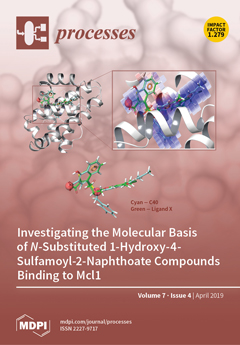Sulfur hexafluoride (SF
6) shows excellent insulation performance as an insulating gas. It is suitable for various climate conditions due to its low boiling point (−64 °C). Therefore, it has been widely used in power grid equipment. However, its global warming potential
[...] Read more.
Sulfur hexafluoride (SF
6) shows excellent insulation performance as an insulating gas. It is suitable for various climate conditions due to its low boiling point (−64 °C). Therefore, it has been widely used in power grid equipment. However, its global warming potential (GWP) is 23,500 times higher than that of CO
2. Thus, it is imperative to find an environmentally friendly insulating gas with excellent insulation performance, lower GWP, and which is harmless to equipment and workers to replace SF
6. In this review, four possible alternatives, including perfluorocarbons, trifluoroiodomethane, perfluorinated ketones, and fluoronitrile are reviewed in terms of basic physicochemical properties, insulation properties, decomposition properties, and compatibility with metals. The influences of trace H
2O or O
2 on their insulation performances are also discussed. The insulation strengths of these insulating gases were comparable to or higher than that of SF
6. The GWPs of these insulating gases were lower than that of SF
6. Due to their relatively high boiling point, they should be used as a mixture with buffering gases with low boiling points. Based on these four characteristics, perfluorinated ketones (C
5F
10O and C
6F
12O) and fluoronitrile (C
4F
7N) could partially substitute SF
6 in some electrical equipment. Finally, some future needs and perspectives of environmentally friendly insulating gases are addressed for further studies.
Full article





